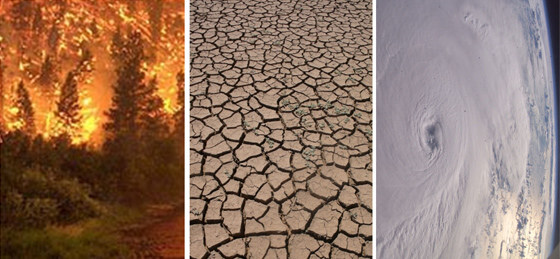Future warming likely to be on high side of climate projections, analysis finds
Today, two scientists at the National Center for Atmospheric Research (NCAR) released an analysis of 16 major climate models suggesting that future warming is likely to be on the high side of climate projections. Their goal was to see which models best matched the reality of our existing climate, in order to assess which models’ temperature projections might match our future climate best. The conclusion: climate models that project a greater rise in global temperature are likely to prove more accurate than those showing a lesser rise.
These scientists, John Fasullo and Kevin Trenberth, published their results today (November 8, 2012) in the journal Science. I asked Dr. Fasullo if these results suggested a profound change for the world our children and grandchildren will live in. He replied:
Yes. The results suggest that even the world we will live in – in the coming decades – is likely to differ considerably from the one we grew up in. But we also have the power to change that and I think this is just as important a message to emphasize. Our choice is between doing things the easy way with prudent and timely policy based on the best available science, or denial of the basic facts that we’re faced with – which will likely entail much higher costs in impacts and adaptation.
Fasullo added:
In some ways the world that we currently live in is quite different that than we grew up in, such as for example in the Arctic.
Fasullo and Trenberth analyzed how well sophisticated climate models reproduce observed relative humidity in the tropics and subtropics. They found that the climate models that most accurately captured what they called “complex moisture processes and associated clouds” were also the ones that projected the greatest amounts of warming for the years ahead. Dr. Fasullo said in a press release:
There is a striking relationship between how well climate models simulate relative humidity in key areas and how much warming they show in response to increasing carbon dioxide. Given how fundamental these processes are to clouds and the overall global climate, our findings indicate that warming is likely to be on the high side of current projections.
Global climate models are mathematical representations of the interactions between and within the ocean, land, ice, and atmosphere. No computer model can predict the future, but the more than two dozen major climate models in use by scientists today can and do provide a range of possibilities as to what the future might bring. These models are all based on long-established physical laws known to guide the processes occurring within Earth’s atmosphere. The movements of energy, air, and water in our atmosphere are complicated. The models attempt to represent interactions between the various components of climate, but it’s no easy task. That’s why each model differs slightly in its portrayal of what the future might bring.
Fasullo and Trenberth believe the result published today could provide a “breakthrough” in the longstanding quest to narrow the range of global warming expected in coming decades and beyond. Dr. Fasullo told me:
The full range in future projections depends on both on future forcing (i.e. increases in greenhouse gases) and model sensitivity. For a doubling of CO2 the range in warming is [about] 3 to 8 F., but that range can change in terms of warming by 2100 depending on which carbon emission scenario is assumed. While our study doesn’t comment on future emissions, it does conclude that the higher sensitivity models are more likely to be correct in their projections and therefore we should expect to be on the higher side of projections for any given emissions scenario.

A higher temperature rise would produce greater impacts on society in terms of sea level rise, heat waves, droughts, and other threats. Bottom line: John Fasullo and Kevin Trenberth at the National Center for Atmospheric Research (NCAR) released an analysis of 16 major climate models suggesting that future warming is likely to be on the high side of climate projections. Their work showed that climate models that project a greater rise in global temperature are likely to prove more accurate than those showing a lesser rise. Read more about this study from NCAR











